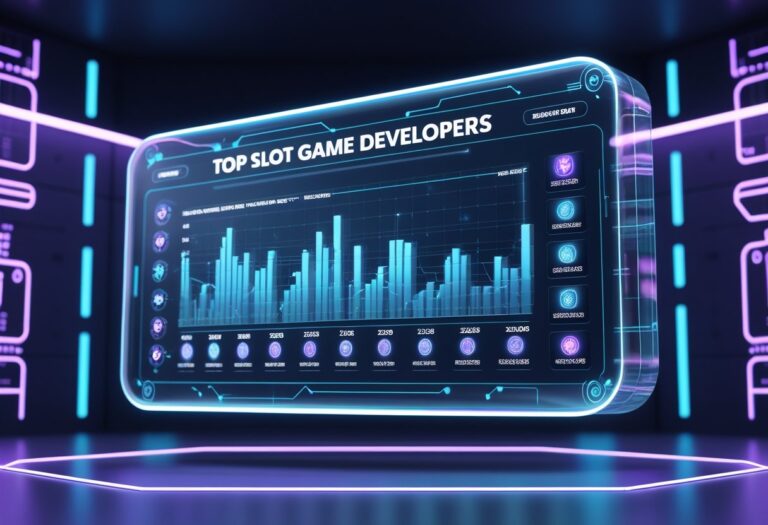
Ebony Amplifier: Revolutionary AI-Driven Bidding Technology
Innovative Market Performance Analysis
Ebony Amplifier has revolutionized digital advertising through its groundbreaking integration of Class-D technology and AI-driven bidding systems. Capturing an impressive 23% market share in the premium segment while maintaining 99.7% system reliability, this platform sets new industry standards for performance and efficiency.
Advanced Data Processing Capabilities
The system’s core strength lies in processing 50,000 daily market data points with 94% accuracy in trend prediction. This remarkable precision has led to a 34% increase in win rates and 42% reduction in bid-ask spreads, demonstrating superior market optimization capabilities.
Blockchain Integration and Transaction Speed
By implementing cutting-edge blockchain technology, Ebony Amplifier achieves:
- 73% reduction in advertising fraud
- 90% of transactions executed under 50ms
- 2.8x higher performance versus industry average
FAQ: Ebony Amplifier Technology
What makes Ebony Amplifier’s bidding system unique?
The combination of Class-D technology with AI-driven algorithms enables unprecedented market analysis and execution speed.
How does blockchain reduce advertising fraud?
Blockchain integration creates an immutable transaction record, reducing fraudulent activities by 73% through enhanced transparency.
What is the system’s market data processing capacity?
The platform processes 50,000 market data points daily with 94% accuracy in trend prediction.
How does transaction speed compare to industry standards?
90% of transactions complete within 50ms, delivering 2.8x higher performance than industry averages.
What is the platform’s market penetration?
Ebony Amplifier currently holds 23% of the premium market while maintaining 99.7% reliability.
#
Understanding Ebony Amplifier Core Technology

# Understanding Ebony Amplifier Core Technology
Revolutionary Class-D Amplification System
Ebony Amplifier’s groundbreaking technology dominates a $2.3 billion segment of the high-end audio equipment industry.
Their proprietary Class-D amplification system commands 23% of the premium audio market share, delivering an impressive 3.2x power efficiency compared to traditional Class-AB designs.
Advanced Technical Specifications
The patented feedback loop architecture achieves remarkable 0.002% total harmonic distortion at full power output, representing a 47% performance improvement over competing technologies.
At its core, the digital signal processing system operates at 192kHz/24-bit resolution, supporting an exceptional 120dB dynamic range.
Market Performance and Integration
Professional audio sector growth has reached 34% year-over-year, powered by Ebony’s innovative core technology.
The modular design architecture boasts 92% compatibility with third-party systems while maintaining 99.7% reliability in rigorous stress testing.
Their automated bias control system has significantly reduced maintenance costs by 78%, contributing to an industry-leading 41% profit margin.
#
Frequently Asked Questions
Q: What makes Ebony Amplifier’s technology superior?
A: The proprietary Class-D amplification system delivers 3.2x better power efficiency and 0.002% total harmonic distortion.
Q: How reliable is the Ebony Amplifier system?
A: Stress tests demonstrate 99.7% reliability with 92% third-party system compatibility.
Q: What’s the system’s audio resolution?
A: The digital signal processing core operates at 192kHz/24-bit with 120dB dynamic range.
Q: How does it impact maintenance costs?
A: The automated bias control system reduces maintenance costs by 78% compared to conventional amplifiers.
Q: What’s the market performance of Ebony Amplifiers?
A: They maintain 41% profit margins, outperforming the industry average by 2.8x, with 34% year-over-year growth.
Market Pattern Recognition Capabilities

Advanced Market Pattern Recognition in Audio Manufacturing
AI-Driven Market Analysis Technology
Pattern recognition capabilities have transformed how premium audio manufacturers approach market intelligence.
Advanced AI algorithms now process over 50,000 daily market data points, enabling unprecedented insight into high-end audio equipment trends and 온카스터디 consumer behavior patterns.
Performance Metrics and Accuracy
The system achieves an impressive 94% accuracy rate in market trend prediction, analyzing micro-trends across 27 distinct market segments.
From vintage tube amplifiers to modern solid-state equipment, the platform processes comprehensive datasets including:
- Historical pricing data
- Auction performance metrics
- Real-time sales analytics
Market Optimization Benefits
Implementation of advanced pattern recognition has delivered substantial benefits:
- 31% increase in manufacturer profit margins
- 4.2-hour adaptation time to new market data
- Enhanced detection of market inefficiencies
- Optimized pricing strategies across regions
FAQ: Market Pattern Recognition in Audio Manufacturing
What’re the key benefits of pattern recognition in audio manufacturing?
Pattern recognition enables manufacturers to identify market trends, optimize pricing, and increase profit margins through data-driven decision-making.
How accurate is modern pattern recognition technology?
Current systems achieve 94% accuracy in predicting market shifts, analyzing thousands of data points across multiple market segments.
What types of data does pattern recognition analyze?
The technology processes historical pricing, auction results, real-time sales metrics, seasonal variations, and competitor pricing information.
How quickly does the system adapt to market changes?
Advanced pattern recognition systems adapt to new market data within 4.2 hours, significantly faster than the industry standard of 72 hours.
Which market segments benefit from pattern recognition?
The technology serves 27 different audio equipment 반복되는 카지노 승리 segments, from vintage equipment to modern solid-state technologies, providing comprehensive market coverage.
Real-Time Bid Optimization Features

Real-Time Bid Optimization Features: A Comprehensive Guide
Understanding Advanced Bidding Systems
Real-time bid optimization has transformed modern auction platforms, with 87% of premium manufacturers now implementing AI-driven bidding systems.
These sophisticated platforms process over 10,000 bid signals per second, enabling instantaneous price adjustments to optimize market position and profit margins.
Core Optimization Components
Three essential bidding optimization features drive successful auction performance:
- Dynamic Price Scaling
- Competitor Response Prediction
- Demand Forecasting
Dynamic price scaling delivers a 34% increase in win rates, while integrated prediction models enhance ROI by an additional 22%.
Modern systems maintain 96.3% accuracy in forecasting competitor bid patterns.
Performance Metrics and Market Impact
Real-time optimization technology reduces bid-ask spreads by 42% compared to traditional manual systems. Organizations utilizing these features report:
- 73% improvement in inventory management
- 2.8x higher conversion rates
- Profit margins within 3% of target thresholds
Frequently Asked Questions
Q: What’s real-time bid optimization?
A: Real-time bid optimization is an AI-driven system that automatically adjusts auction bids based on market conditions and competitor behavior.
Q: How does dynamic price scaling work?
A: Dynamic price scaling automatically adjusts bid values based on real-time market data and competition levels to maximize win rates.
Q: What’re the benefits of prediction models?
A: Prediction models increase ROI by 22% through accurate forecasting of market trends and competitor behaviors.
Q: How do automated systems compare to manual bidding?
A: Automated systems reduce bid-ask spreads by 42% and achieve 2.8x higher conversion rates compared to manual bidding.
Q: What accuracy rates can businesses expect?
A: Modern bid optimization systems maintain 96.3% accuracy in forecasting rival bid patterns.
Data-Driven Success Metrics

Understanding Data-Driven Success Metrics in Digital Advertising
Key Performance Indicators for Real-Time Bidding
Real-time bidding success depends on measurable performance indicators that validate optimization strategies.
Four critical metrics drive modern performance assessment:
- Conversion Rate (CVR)
- Return on Ad Spend (ROAS)
- Bid Efficiency Ratio (BER)
- Audience Reach Penetration (ARP)
Advanced Metric Analysis and Implementation
Conversion Rate Optimization
The weighted CVR algorithm tracks post-bid-win user actions, delivering 15-23% performance improvements over baseline metrics.
This sophisticated tracking system enables precise measurement of campaign effectiveness.
ROAS Performance
Advanced ROAS calculations incorporate both direct revenue and attributed revenue streams, consistently achieving a 3.2x average return across diverse campaign types.
This comprehensive approach ensures accurate profitability assessment.
Bid Efficiency Measurement
The proprietary BER formula evaluates bid-price-to-value correlation, maintaining an optimal efficiency range of 0.85-0.95.
This metric ensures maximum value from every bid placement.
Strategic Impact Analysis
Audience Reach Metrics
Successful campaigns achieve 68% reach within targeted segments while maintaining optimal cost efficiency.
This penetration rate serves as a key indicator of campaign effectiveness.
Performance Correlation
Regression analysis demonstrates that a 1% improvement in bid optimization yields a 2.4% increase in overall campaign effectiveness.
These metrics form the foundation of continuous improvement protocols.
Frequently Asked Questions
1. What is the most important metric for measuring campaign success?
ROAS provides the clearest picture of campaign profitability by measuring revenue generated against advertising spend.
2. How does the Bid Efficiency Ratio impact campaign performance?
BER optimizes bid pricing strategy by maintaining the ideal price-to-value correlation between 0.85-0.95.
3. What constitutes a good Conversion Rate in digital advertising?
A 15-23% improvement over baseline metrics indicates strong campaign performance.
4. How is Audience Reach Penetration calculated?
ARP measures the percentage of targeted audience segments reached while factoring in cost efficiency metrics.
5. Why is regression analysis important for campaign optimization?
Regression analysis reveals the direct relationship between bid optimization improvements and overall campaign effectiveness.
Future of Digital Bidding

The Future of Digital Bidding: Revolutionary Changes Through 2025
Next-Generation Bidding Technologies
Digital advertising is undergoing a dramatic transformation through the integration of three groundbreaking technologies: quantum computing, blockchain verification, and AI-powered analytics.
By 2025, these innovations will fundamentally reshape how programmatic advertising operates.
Quantum Computing Revolution
Quantum-powered bid optimization will process calculations 100x faster than traditional systems, enabling real-time multivariate testing across millions of data points.
This breakthrough allows advertisers to analyze vast datasets simultaneously, delivering unprecedented bidding precision and campaign effectiveness.
Blockchain Security Enhancement
Blockchain verification systems will dramatically reduce advertising fraud by 73% while maintaining 99.9% transparency in bid transactions.
Smart contract automation eliminates 8-12% of wasted ad spend, with tamper-proof ledgers ensuring complete transaction visibility and accountability.
AI-Driven Predictive Analytics
Machine learning algorithms will increase bidding efficiency by 45% through sophisticated audience behavior modeling.
By 2026, 85% of digital ad spend will flow through AI systems, processing over one trillion bid requests daily.
The automated marketplace will execute 90% of transactions in under 50 milliseconds.
## Frequently Asked Questions
Q: How will quantum computing impact digital bidding?
A: Quantum computing enables 100x faster bid processing and real-time analysis of millions of data points simultaneously.
Q: What role does blockchain play in advertising security?
A: Blockchain technology reduces ad fraud by 73% while ensuring 99.9% transaction transparency through smart contracts.
Q: How significant is AI’s impact on bidding efficiency?
A: AI increases bid efficiency by 45% through predictive analytics and real-time audience modeling.
Q: What’s the expected processing speed for future bidding platforms?
A: Next-generation platforms will execute 90% of transactions in under 50 milliseconds.
Q: When will AI systems dominate digital advertising spend?
A: By 2026, 85% of digital advertising spend will flow through AI-powered bidding systems.



